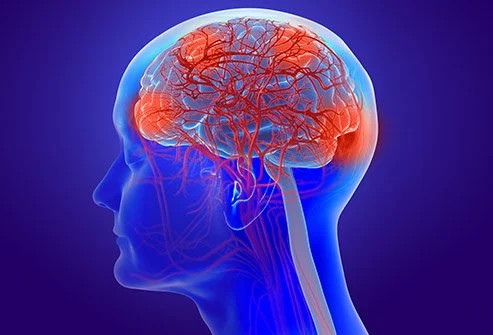Definisi
Syok sepsis adalah sebuah kondisi ketika sistem peredaran darah tidak mampu memenuhi kebutuhan oksigen organ-organ tubuh, yang disebabkan oleh sepsis. Sepsis adalah sebuah kondisi ketika tubuh memiliki respon yang berlebihan terhadap infeksi. Syok sepsis memiliki angka kematian yang sangat tinggi.
Penyebab
Sepsis dapat terjadi sebagai komplikasi dari infeksi bakteri, jamur, atau virus. Infeksi ini dapat dimulai di mana saja, baik di rumah maupun rumah sakit (misalnya ketika sedang menjalani perawatan inap untuk kondisi lainnya). Sepsis biasanya dapat berasal dari infeksi pada perut atau saluran pencernaan, infeksi paru-paru (pneumonia), infeksi saluran kemih, dan infeksi kelamin. Jika sepsis tidak segera ditangani, pasien dapat jatuh ke dalam syok sepsis.
Faktor Risiko
Faktor risiko sepsis dan syok sepsis adalah sebagai berikut:
- Usia ekstrem (di bawah 10 tahun atau di atas 70 tahun)
- Adanya penyakit primer (seperti pengerasan hati, alkoholisme, diabetes mellitus, masalah jantung dan paru, dan keganasan baik padat maupun darah)
- Penekanan sistem kekebalan tubuh (misalnya akibat kadar sel darah putih yang rendah, terapi untuk menurunkan sistem kekebalan tubuh yang diberikan pada pasien pascacangkok organ, terapi kortikosteroid jangka panjang, masalah kekebalan tubuh, dan asplenia atau ketiadaan limpa)
- Operasi, cedera, dan luka bakar yang besar atau luas
- Prosedur invasif (misalnya pemasangan selang kateter, alat di dalam pembuluh darah, alat prostetik, selang cuci darah, atau selang napas)
- Riwayat terapi antibiotik sebelumnya
- Perawatan inap jangka panjang
- Kerentanan genetik
- Faktor lainnya (seperti melahirkan, aborsi/keguguran, dan gizi buruk)
Gejala
Sepsis adalah kegawatdaruratan medis, namun awalnya, gejalanya dapat mirip dengan penyakit biasa seperti batuk dan demam. Jika Anda atau orang di dekat Anda baru saja mengalami infeksi yang tidak kunjung sembuh, gejala-gejala ini dapat menunjukkan tanda-tanda sepsis:
- Demam tinggi disertai menggigil
- Nyeri pada badan yang luar biasa
- Denyut nadi sangat cepat
- Napas cepat
- Ruam
Meskipun gejala-gejala tersebut dapat merupakan gejala dari kondisi lainnya, Anda dapat berkonsultasi dengan dokter terkait kondisi Anda atau orang di dekat Anda tersebut.
Perubahan dari sepsis ke syok sepsis dapat terjadi dengan sangat cepat, dan pergantian ini disertai dengan peningkatan risiko kematian. Gejala syok sepsis dapat berupa:
- Jumlah air kencing yang berkurang drastis (atau tidak kencing sama sekali)
- Bingung dan gelisah yang bersifat akut
- Pusing
- Masalah napas yang parah
- Perubahan warna kulit menjadi pucat kebiruan (sianosis)
Orang yang mengalami syok sepsis juga memiliki tekanan darah yang sangat rendah dan tidak membaik dengan pemberian cairan infus. Selain itu, pasien syok sepsis juga memiliki masalah aliran darah yang dapat menyebabkan gagal fungsi organ-organ tubuh.
Diagnosis
Syok sepsis merupakan kegawatdaruratan medis yang harus segera ditangani. Dokter akan mencurigai adanya syok sepsis lewat penegakan riwayat dan pemeriksaan seperti tekanan darah dan kadar oksigen di dalam darah (pulse oximetry). Selain itu, dokter akan melakukan pemeriksaan laboratorium dan pencitraan sesuai kebutuhan. Pemeriksaan laboratorium tersebut dapat berupa:
- Gula darah
- Darah lengkap
- Penanda radang seperti protein reaktif C (C-reactive protein) dan prokalsitonin
- Analisis gas darah
- Fungsi ginjal dan hati
- Pembekuan darah
- Bilirubin (zat yang dapat menyebabkan warna kulit terlalu kuning)
- Laktat
- Kultur darah (pengembangbiakkan kuman pada sediaan darah) untuk mengetahui kuman penyebab syok sepsis
- Pungsi lumbal (pengambilan cairan di luar sumsum tulang belakang) jika ada kecurigaan infeksi pada sistem saraf pusat, yang harus dilakukan sebelum pencitraan
Pencitraan yang dilakukan dapat berupa radiografi polos, ultrasonografi, computed tomography scan (CT scan) dan magnetic resonance imaging (MRI). Radiografi polos atau rontgen dapat dilakukan pada dada, perut, atau anggota gerak tubuh, sesuai kecurigaan sumber infeksi. Jika sumber infeksi tidak jelas, prioritas pemeriksaan adalah rontgen dada, karena sebagian besar pasien sepsis mengalami infeksi paru (pneumonia). Sementara itu, ultrasonografi (USG) dilakukan apabila ada kecurigaan infeksi pada kantung empedu atau saluran empedu. Jika fasilitas memadai, dapat pula dilakukan operasi atau endoscopic retrograde cholangiopancreatography (ERCP), sebuah prosedur menggunakan selang dengan kamera di ujungnya untuk mengatasi masalah pada empedu. Selain itu, USG dapat berupa ekokardiografi atau USG jantung, yang dapat mendeteksi adanya masalah jantung yang menyertai sepsis. Sementara itu, CT scan disarankan untuk mencari sumber infeksi pada perut, karena pemeriksaan ini cukup cepat dan mampu menunjukkan adanya masalah pada perut lebih baik daripada rontgen.
Tata Laksana
Tata laksana syok sepsis bertujuan untuk menstabilkan sistem peredaran darah dan menyingkirkan sumber infeksi. Oleh karena itu, berbagai macam obat-obatan akan dipakai pada tata laksana ini, meliputi:
- Antibiotik suntik untuk memerangi infeksi
- Obat-obatan vasopresor, yaitu obat-obatan yang memperkecil pembuluh darah agar tekanan darah naik
- Insulin atau hormon yang mengatur gula, karena kadar gula pada pasien syok sepsis seringkali tidak stabil
- Kortikosteroid untuk menekan reaksi peradangan pada tubuh
Selain obat-obatan tersebut, dokter juga akan memberikan cairan infus dalam jumlah yang cukup besar untuk menangani dehidrasi (kurang cairan) serta untuk meningkatkan tekanan darah. Hal ini penting untuk memastikan aliran darah sampai ke organ-organ tubuh. Jika kadar hemoglobin (pembawa oksigen di dalam darah) rendah, dokter dapat memutuskan untuk transfusi darah. Tidak hanya itu, pasien mungkin akan memerlukan alat bantu napas.
Tata laksana lainnya dapat berupa pembedahan untuk membersihkan sumber infeksi, misalnya dengan mengalirkan nanah dari kantong berisi nanah (abses) atau membersihkan jaringan-jaringan yang sudah mati atau terinfeksi.
Komplikasi
Komplikasi syok sepsis sangat beragam dan mengancam nyawa, yaitu:
- Acute respiratory distress syndrome (ARDS), sebuah kondisi ketika pernapasan tidak efektif untuk mencukupi kadar oksigen di dalam tubuh
- Gagal ginjal akut atau kronik akibat kekurangan oksigen
- Disseminated intravascular coagulation (DIC), sebuah kondisi ketika pembekuan darah terjadi secara besar-besaran pada seluruh tubuh
- Iskemia mesenterik, sebuah kondisi ketika usus kekurangan oksigen
- Gagal hati akut karena kekurangan oksigen
- Masalah fungsi otot jantung
- Gagal organ multipel
Pencegahan
Pencegahan syok sepsis dapat dilakukan dengan menangani infeksi sesegera mungkin sebelum penderita masuk ke sepsis. Jika Anda mengalami tanda-tanda infeksi seperti demam, batuk, pilek, sesak napas, nyeri gigi, nyeri berkemih, atau nyeri perut, sebaiknya Anda segera berobat ke dokter. Sepsis biasanya diawali oleh penyakit-penyakit yang terjadi sehari-hari, namun tidak tertangani dengan baik. Oleh karena itu, pencegahan dapat dimulai dengan waspada dan segera berobat jika mengalami infeksi. Selama pengobatan, Anda dapat berkonsultasi apabila gejala yang Anda alami tidak membaik sehingga dokter dapat mempertimbangkan terapi lainnya yang cocok untuk Anda. Kerja sama antara Anda sebagai pasien dan dokter sangat penting untuk mencegah syok sepsis terjadi.
Kapan harus ke dokter?
Segeralah ke dokter apabila Anda mengalami infeksi yang tidak kunjung sembuh dan mulai mengalami gejala seperti demam tinggi disertai menggigil, nyeri seluruh badan yang luar biasa, denyut nadi dan napas semakin cepat, serta ruam-ruam. Gejala ini dapat merupakan petunjuk dari kondisi selain sepsis, namun sepsis adalah salah satu kemungkinan terburuk yang perlu ditangani sesegera mungkin. Syok sepsis yang ditangani dengan cepat dan tepat dapat meningkatkan kemungkinan kesembuhan total.
Mau tahu informasi seputar penyakit lainnya? Cek di sini, ya!
- dr Nadia Opmalina
DiGiacinto, J., Johnson, S., & Goodwin, M. (2021). Septic Shock: Symptoms, Causes, Diagnosis, Treatment & More. Retrieved 29 April 2022, from https://www.healthline.com/health/septic-shock
Kalil, A. (2020). Septic Shock: Practice Essentials, Background, Pathophysiology. Retrieved 29 April 2022, from https://emedicine.medscape.com/article/168402-overview
Mahapatra, S., & Heffner, A. (2021). Septic Shock. Retrieved 29 April 2022, from https://www.ncbi.nlm.nih.gov/books/NBK430939/











